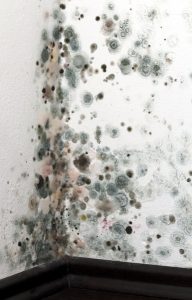 Can you think of something that would serve as a detriment to your employee’s health, comfort, and ability to work?
Can you think of something that would serve as a detriment to your employee’s health, comfort, and ability to work?
No, the answer is not “social media addiction.”
What we’re talking about is indoor air quality. Low indoor air quality is characterized by a high number of indoor pollutants, contaminants, and otherwise unfavorable conditions in the air. In this post, we’ll show you just a few factors that contribute to low indoor air quality.
Contaminants
One drawback of a closed air system is the number of contaminants that can exist within it. Without a healthy amount of ventilation, these contaminants can continue to wreak havoc in your air circulation. Over time, the number of contaminants will only grow, and this will put you, your employees, or your customers at risk.
Contaminants are not all created equal, some derived from dust and chemicals, and others consisting of live organisms. Likewise, you’re going to need different kinds of treatments for each type.
Air filters can effectively trap most contaminants onto a filter, which can then be disposed of later. Air purifiers, on the other hand, can actively work to remove particles in the air. For living microorganisms, a UV air purifier can effectively eliminate them before they have the change to reproduce.
The type of air treatment you need depends largely on your business, so it’s best to call a commercial indoor air quality expert in Birmingham, AL.
Humidity Control
According to the relative humidity index, a comfortable humidity level is between 30 and 50 percent. Low and high humidity are both problems for different reasons, but luckily, humidifiers and dehumidifiers can help. The benefits of both are for more than just comfort.
Low Humidity
In times of low humidity, the dry air can compromise people’s immune systems. A certain amount of moisture is needed for the sinuses to function properly, so dry air can prevent you from getting over a cold or sickness.
Dry air can also cause damage to wood furniture, wood flooring, and electronics.
Wood can swell and shrink as it desorbs water, which can cause warping in wood floors or loosen joints in furniture.
As for electronics, the dry air can create static electricity, which is deadly to electronics. A shock of static electricity can fry a circuit board, which is the last thing you want to happen if your business depends on hard drives and computers (and in this day and age, what business doesn’t?).
High Humidity
Most of us should be aware of the effects of high humidity. It gives us a gross and sticky feeling, and it can make the temperature feel several degrees higher than it actually is. However, high humidity—like low humidity—can contribute to bad air quality and damages.
For one, humidity can create condensation on walls. This will foster the growth of bacteria and mold. Mold spores will float through the air and begin to contaminate the indoor air quality.
Second, high humidity can also cause walls and floors to absorb moisture. Wood can become warped, and drywall can become an incubator for mold and bacteria.
Want to learn more about how you can prevent low indoor air quality? Contact Gas Engineers today!







